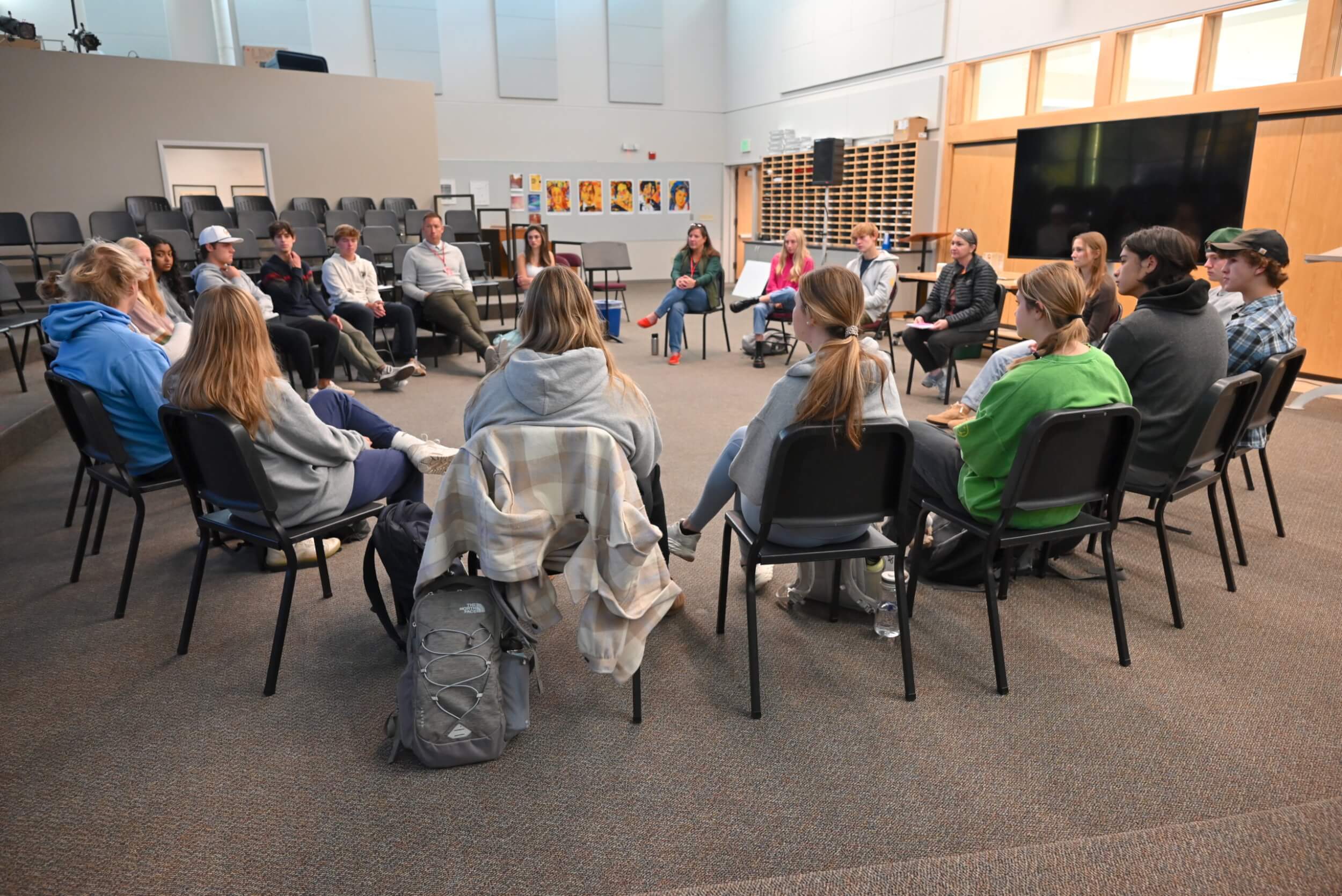Students appear in the doorway of Liza Skipwith’s office at all hours of the school day. As Colorado Academy’s Director of Counseling Services and one of two counselors in the Upper School, Skipwith frequently sits with young people seeking advice, support, or simply a safe space to let their emotions show. She says being present for students is the most important part of her job.
“Enabling face-to-face interaction with someone who cares is the number-one priority of this department,” she explains.
According to Senior Liana Fagelson, “Whenever I’m stressed about something like a bad grade, I can just go see Ms. Skipwith and talk to her, vent to her about how I’m feeling about a specific situation that I’m going through. She gives me really good tools to have a conversation with a teacher if there’s something that’s going on in the classroom. CA has done such a good job at giving us those resources and giving us people who have our best interest at heart and want us to succeed.”
Throughout their time at CA, students in all three divisions learn that getting help from one of the school’s full-time counselors, a teacher, coach, peer, or other trusted figure is not just encouraged—it can be vital to their success as students and individuals. Health and well-being are central to the school’s mission, and this community-wide safety net of concern is the centerpiece of CA’s approach to social emotional learning. It is designed to support students who may be struggling, as well as to help them thrive, as they tackle rigorous academics, athletics, and arts.
“All of us at CA contribute to a culture of care,” Skipwith says. “We constantly reinforce with students that they are not alone, and that we take care of each other as a community—whether it is someone noticing that their friend is hurting or a teacher going to a counselor with a concern about a student in class. Nobody here is ‘under the radar’ when it comes to social emotional well-being.”
“Our students are motivated and ambitious, and the pressure they put on themselves can sometimes be the enemy of success,” says Head of School Dr. Mike Davis. “We have a duty to respond to the age of anxiety that we live in.”
Upper School: Taking care of each other
Skipwith and fellow Upper School counselor Kate O’Donnell know that students in Grades 9-12 face numerous challenges, from social media bullying, to academic disappointments, to family strife, that can contribute to sometimes debilitating anxiety and serious depression. This is why Skipwith and O’Donnell meet with every incoming Ninth Grader individually and in small groups to build rapport, make connections that will last four years, and discuss ways to find support throughout the CA community.
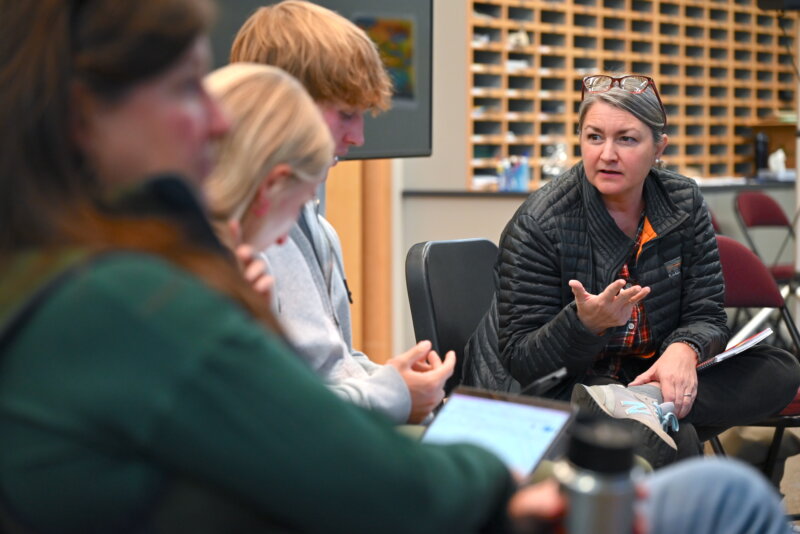
“We train them first of all to take care of themselves,” says Skipwith, “and second, we teach them to look out for others, to be aware of the signs and symptoms of depression, anxiety, and more. Most importantly, we encourage them to take action—to reach out to us or to a teacher or advisor either on their own behalf, or on behalf of a peer.”
Those messages are reinforced in numerous ways as students progress through the Upper School.
Skipwith brings in speakers to talk with students about mental health issues, including substance abuse prevention, eating disorders, sexual harassment and assault, and suicide. She attends parent meetings to assure families that CA counselors are here to help them. She trains faculty and coaches to watch for signs that students are sinking emotionally. In advisory groups, Skipwith works with faculty members to help guide students when they have concerns around friendships, time management, social media, and more.
“We never stop showing our students that we care about them,” Skipwith says. “We want them to trust that we notice them, and that we’re not going to let them give up, whatever they may be facing.”a
Tackling academic challenges
Academic challenges often go hand-in-hand with social emotional ones, so Twelfth Grade Dean and Academic Coach Gabe Bernstein works closely with Skipwith and O’Donnell to help students who may be struggling in the classroom. Together, they identify and offer support to those who might require specific academic accommodations—such as extra time to complete a test—or who may just need coaching with skills, such as time management, organization, and self-advocacy. These executive functioning skills, as they are known, play a large role, not only in students’ academic success, but also in their health and happiness at school.
“A big part of my job,” says Bernstein, “is just offering a space and resources to ask students to reflect on the type of learner they are, so they can begin to figure out the answers to the questions, ‘How do I best learn when I’m in school? What strategies do I need to have in place for note-taking or for distraction management? What’s the best environment for me to be efficient at home?’ It’s helping them figure out how to ‘do’ school.”
Often, it is Ninth Graders whom Bernstein coaches, meeting with them during a study hall block to strategize.
“I see a lot of our incoming students struggling with being organized and efficient with their schedules,” he says. “Particularly at home, we’re finding that their habits leave them vulnerable to distractions—they’re telling us that they do their homework while lying on their bed, with their phone next to them. Or they’re trying to sit and focus on their work for three hours straight, and finding themselves exhausted. They’re ending up with work due the same day they’re racing to complete it in a study hall.”

Bernstein uses CA’s printed Upper School academic planner, a requirement for Ninth Graders and an option for Tenth through Twelfth Graders, to frame these strategy sessions, during which he works with students to map out assignments, assessments, goals, help periods, and afterschool activities for the coming days.
“That mapping piece—the ability to look ahead and forecast what they have to get done and when they will find time to do it—is really one of the best things we can give to our students.”
This focus on organization and executive functioning is becoming increasingly important, at every grade level, as schools such as CA endeavor to offer robust support to neurodiverse students with diagnoses such as attention deficit hyperactivity disorder (ADHD). ADHD and similar diagnoses can make it challenging for students to manage multiple tasks and courses, plan out completion of long-term projects, and set and reach goals.
Along with counselors and faculty members—who implement individually tailored learning plans and receive ongoing professional development related to supporting neurodiverse students—Bernstein works one-on-one with these learners to help them gain confidence and agency in understanding and expressing their own needs.
“The challenge for some students is to see themselves as capable in really rigorous classroom environments,” Bernstein acknowledges. “For me, the key is their being able to go and talk to their teacher. It can be a hard conversation, but the more students can be transparent with their needs, and work with their teacher to make little tweaks and changes, the more successful they will be.”
Building trust
Aiding Bernstein, Skipwith, and O’Donnell in the Upper School is the Community Leadership Team (CLT), a group of Senior leaders carefully chosen and intensively trained to mentor Ninth Grade students. The Twelfth Graders are able to build trust with the younger students, who often open up to them about difficult issues just as they emerge.
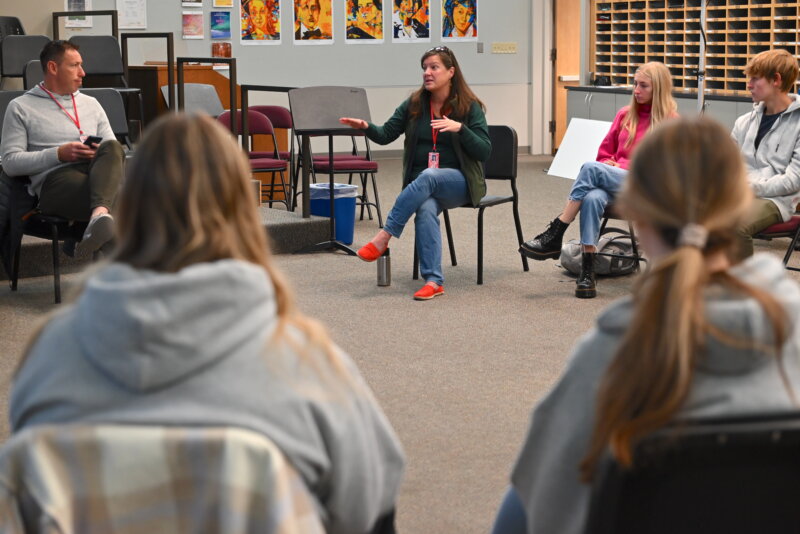
CLT member Joe MacDougall has recently been talking to his Ninth Grade group about cyberbullying. “It’s a pressing issue right now,” he says, “and some students are just more comfortable coming to one of us about it than a teacher or advisor. We can have a more casual conversation with them. I found that I really enjoyed this kind of discussion, because they were able to share their honest take on the use of social media at CA. It was enlightening for all of us.”
Fagelson, also a CLT member, says that when she arrived at CA in Ninth Grade, her own CLT mentor made a huge impact during the transition. Coming from a school where she had spent most of her life until that point, she explains, “I felt like I didn’t know what was going on, and I didn’t know anyone. But a Twelfth Grader on the CLT welcomed me in and helped me find my way.”
Now, Fagelson says, she tries to do the same thing with the group of Ninth Graders she’s mentoring. She helps them identify the people in the Upper School who are there to support them, leads games that build bonds between the students, and provides advice on navigating academic and social stress.
“It can be stressful, coming into the Upper School,” says Fagelson. “So it’s a great feeling when you can walk past a Ninth Grader on campus and see their face light up when you ask how their day is going. It is so important for them to have someone on their side and to feel recognized.”
“The CLT members are our foot soldiers,” says Skipwith. “They are right there with the Ninth Graders, helping them deal with their concerns in the moment. They provide us with great information, too. They can let us know what kind of developing problems to look for, and who might be in trouble. They are one way we keep our finger on the pulse of the Upper School.”
Another valuable resource for Skipwith and her counseling team is Safe2Tell Colorado. During the pandemic, when counselors and teachers couldn’t be as available to support students face-to-face, this anonymous reporting system enabled students to easily share concerns about themselves or a peer via a centralized hub. Schools and law enforcement would then be notified so they could follow up on the reports, if appropriate.
According to Skipwith, CA students using Safe2Tell—or sharing their concerns directly with a counselor—have made a real impact. She cites a recent example of a student who heard a classmate talking about harming themselves. The student made a report through Safe2Tell, which then went to Skipwith, who was able to follow up with the classmate, and to the local police, who went to the home to perform a welfare check.
“Our students are literally saving lives,” Skipwith emphasizes.
Middle School: Opportunities for growth
While Middle School counselor Abby Johnson sees Sixth through Eighth Grade students struggling with many of the same issues that Upper Schoolers face, she also knows that Middle Schoolers experience their own unique set of challenges—and opportunities.
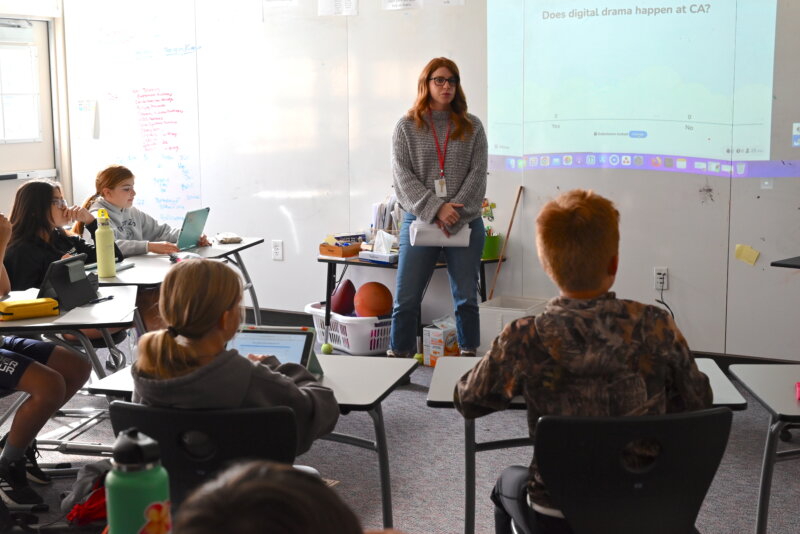
With rapid growth and development, hormonal changes, shifting friendships, and the move from the Lower School’s single-teacher homeroom model to a more complex subject teacher approach, Johnson says a big part of her job is simply convincing students that the stress and anxiety they may be feeling about all this are normal and manageable.
“I want students to understand that I am here to help them through it,” she explains. “And not only when things are hard. I am here to celebrate with them when things are good, too—when they win a soccer game, or have an amazing trip experience. Together with their teachers, we are their cheerleaders and their guides.”
With 15 years of counseling for this age group under her belt, Johnson sees a strong connection between student success and the support that she and other adults in the Middle School provide. “If students are not feeling good socially and emotionally, there’s no way we can expect them to perform to the level of their abilities and find out who they are and what they’re capable of.”
According to Eighth Grader Brielle Burkett, CA offers ample opportunities for Middle School students to find acceptance and support. As one of the leaders of the Gender Sexuality Alliance (GSA) club, Burkett says that with all the resources available to them, including student-led clubs such as GSA, “Everyone can find a place to be with people they relate to.”
“We’re a social community,” Burkett continues. “Everybody knows each other and cares for each other, and it shows.”
Successful strategies
For Johnson, establishing that kind of supportive, student-centered environment starts the moment students arrive in the Middle School, in Sixth Grade. Johnson meets with every incoming student, using games and get-to-know-you activities to make sure they feel comfortable with her and her role. “I love building those relationships,” she says.
In learning about and supporting Middle Schoolers, Johnson says, she pays particular attention to executive functioning, the all-important social emotional foundation that students will build on as they move through their academic life. As in the Upper School, neurodiversity, too, is an increasing focus.
Along with helping to design individual academic modifications, accommodations, and support plans specifically for neurodiverse students and those who need executive functioning help, Johnson partners with teachers and advisors to ensure that skills such as time management, personal organization, and effective communication are firmly in place for every student.
“In the Lower School, parents may have played a larger role in terms of organization and communicating with the teacher, but at this point in their school careers, students need to be able to be their own advocate, their own problem-solver. We help them practice that. We help them discover what strategies work for them—one child may find a paper-and-pen planner helpful in keeping organized, while another might lose that planner almost immediately!”
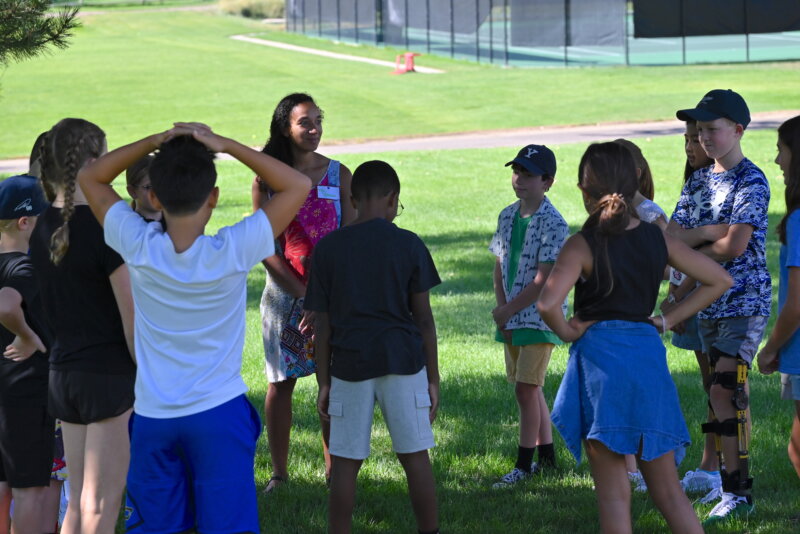
Advisory is where much of that strategizing takes place. All Middle School students are assigned to small advisory groups for each school year. Every day, the advisory students meet with a faculty leader, establishing a sort of “home base” where they can have difficult conversations, practice good decision-making, and build character. It is an ideal environment for students to work on those social emotional skills that will be essential to their success.
At regular grade-level meetings, Johnson is able to compare notes with teachers from their classroom or advisory about what works for individual students, as well as to identify new concerns that need follow-up in the form of individual or group support.
“Teachers are on the front lines of knowing what is going on with their students,” Johnson says. “If they see a child struggling in some way, it immediately comes to me so I can then meet with the student. At the same time, if a student approaches me first with a concern, I can let the teachers know what to be looking out for in the classroom, and how we can work together to offer the help that’s needed.”
Eighth Grader Nina Oren points out that faculty members are a critical source of support. “I have a lot of teachers who I feel really comfortable with, and who I know I could go to. They are incredibly nice, they are always helpful, and they get it.”
Parents, too, are an important part of the equation. Johnson is insistent about keeping them involved, every step of the way.
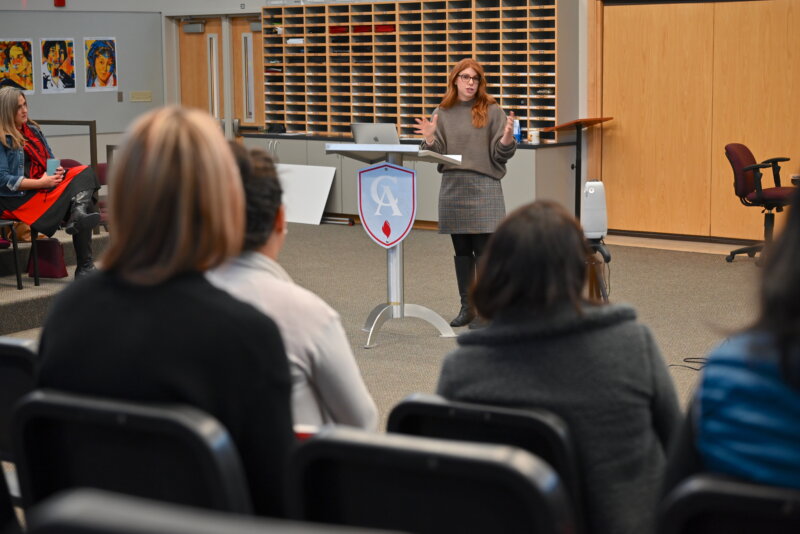
“I love the open conversation with parents who get in touch with me for advice, or to let me know about something that’s going on at home. We are all on the same team, and it’s never productive for parents to be doing one thing at home, when at school we’re doing something different.”
Johnson often reaches out to parents proactively, to let them know about something she and her colleagues in the Middle School may have observed about a child. “I will always pick up the phone and get in touch with the parents. I want to know if what we’re seeing at school agrees with what they’re seeing at home. This is the only way we’re going to be effective at supporting that child.”
The fixes may not be quick ones, Johnson acknowledges. Indeed, she sometimes refers students and families to outside professionals for more intensive counseling than she can offer during the school day. But in every case, she says, she assures students that she’ll stay by their side until they find what works.
Lower School: Building a strong foundation
On any given day, the hallways of CA’s Lower School are usually filled with laughter and joy—seemingly a world away from the big transitions that stress Middle Schoolers, or the uncertainties that bring Upper Schoolers to Liza Skipwith’s door.
But Lower School counselor Brooke Hamman knows that serious social emotional work is happening here, too, laying the foundation for students’ lifelong happiness and success.
“What we hope students leave us with,” Hamman says, “is a set of skills that will carry them through their Middle and Upper School experiences, and on into college and the rest of their lives.”
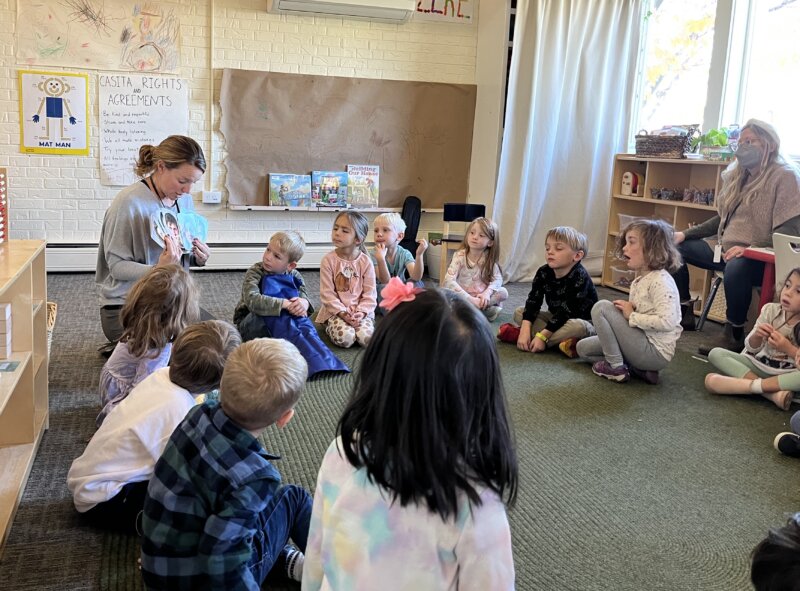
Hamman and the teachers she works with throughout the Lower School offer children direct instruction in skills such as feeling identification, emotional regulation, conflict resolution, and interpersonal communication—“all the things they need,” she says, “to manage themselves as individuals and figure out the answer to the fundamental question, ‘How do I operate within the world?’”
Guiding Hamman’s efforts are CA’s “Formative Five,” the basic character traits that everyone in the Lower School tries to emulate in their day-to-day lives. These are integrity, grit, embracing diversity, self-control, and empathy.
“What we hope it all leads to,” says Hamman, “is every child finding their voice. We are teaching them how to be an upstander, how to stand up for themselves, set boundaries, and understand and work constructively not only with their peers, but also with faculty, staff, and their parents.”
It’s a long social emotional journey, Hamman admits, but on the calendar, it only lasts from about age four to around age 10, when Fifth Graders are preparing to depart for Middle School. Progress happens at every step along the way.
As always, teachers are on the front lines, with valuable social emotional learning integrated into every day’s schedule through approaches such as Responsive Classroom, an evidence-based method of teaching that ties engaging academics to a positive community, effective management, and developmental awareness.
Hamman also works with students individually and in small groups when extra support is needed. Students may request time with Hamman using a social emotional check-in system she keeps posted on her office door. Or, she may collaborate with teachers on scheduling individual and small-group sessions that could focus on anything from friendships to anxiety, from developing social skills to practicing emotional regulation.
“It changes year to year depending on the particular needs in the building,” Hamman explains, “but whatever is going on, I can give children strategies to help them manage.”
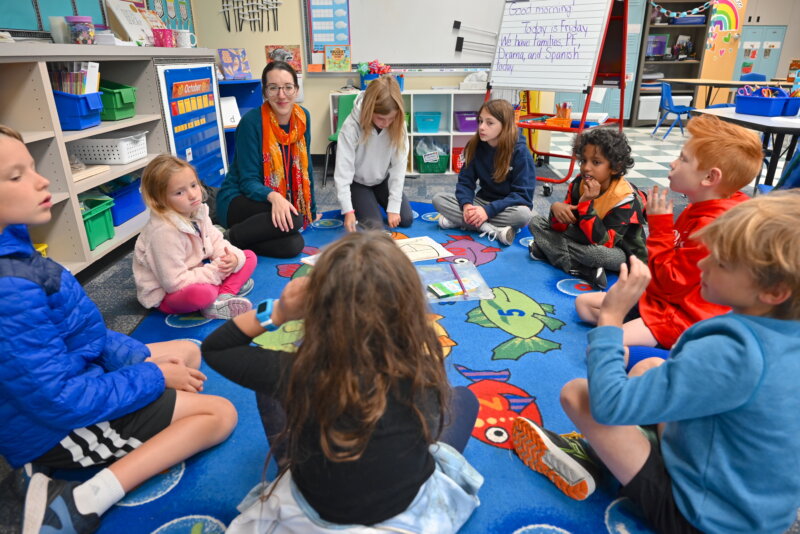
Fifth Grade Mustang Mentors lend a hand, too. These Lower School leaders, who are selected through an application process, regularly visit Pre-K classes to help teachers, mentor the youngest members of the CA community, and begin building supportive relationships that can last for years.
The same rationale grounds the new FAMILIES program, which, according to Lower School Principal Angie Crabtree, brings Kindergarten through Grade 5 students together with an adult mentor to build connections across grades and classrooms, as well as to provide leadership opportunities for older children. “The members of each FAMILY join in service projects and other activities throughout the year,” says Crabtree, “and they remain together until they graduate from the Lower School.”
It is no coincidence that building community is so central to social emotional learning in the Lower School. Throughout all three divisions, at every stage of their CA career, students find themselves supported by peers, teachers, coaches, and counselors—a robust and deliberate network that helps them face uncertainty, manage anxiety, and learn to be flexible in unpredictable situations. In an increasingly complex and fast-paced world, these strong connections—even just one caring individual—can make all the difference.
